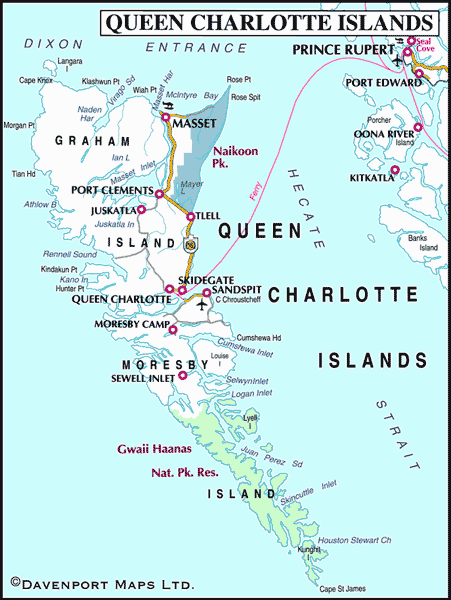
We The North
It’s February. The North lays blanketed in a shock of white: an outer insulation stilling movement and sound. Simply, snow is quiet. And in the midst of this hush, hands are abustle.
Margaret Graine is shaping silver and gemstones in the remote hamlet of McBride. “For some artists, place does not matter,” says Margaret. “However, if you are inspired by rivers, stones, glaciers and pine trees, the location of your studio matters a lot.” This is why she left the bustle of cosmopolitan Toronto and relocated to the North.
It’s the wild woods that fuel Todd Stockner’s craft in Hazelton. “There are few materials that can come close to the incredible range of colours, textures, and even scents that the woods of the world possess,” he says. “It is to allow this material a voice, one which will live on for generations,” which inspires his contemporary furniture.
The North draws those that aren’t afraid of the elements, those willing to get their hands dirty. It’s Northerners who understand that there is no bad weather, just bad clothing. If you’re dressed right, the North is a year-round playground. And here the people make.

Agate Beach, Graham Island, Haida Gwaii. Photo: Ian Gould
To the Ends of the Earth: The Mystery of Haida Gwaii
Haida Gwaii is perhaps the most remote part of British Columbia’s North. It is here, in a place where roads cannot deliver you, that the warmest of welcomes awaits. Formerly known as the Queen Charlotte Islands, Haida Gwaii literally translates as “Islands of the Haida people,” an archipelago on the North Coast of British Columbia, Canada.
The islands are separated from the British Columbia mainland to the east by Hecate Strait. Vancouver Island lies to the south, across Queen Charlotte Sound, while the U.S. state of Alaska is to the north, across the disputed Dixon Entrance. Haida Gwaii consists of two main islands: Graham Island in the north and Moresby Island in the south, along with approximately 150 smaller islands.
Unique and ancient species lived on Haida Gwaii while the rest of North America was covered by ice. Known as a “refugia” from the last ice age, the islands are also referred to as Canada’s
“Galapagos of the North”
Cameron Bell, Economic Development Officer for the Misty Isles Economic Development Society, has called the islands home for the past year. “Over the year I have lived on Haida Gwaii, I’ve consistently been amazed by the biologically rich intersection of coastal and terrestrial ecology on these islands,” says the wild food harvester and outdoor recreation enthusiast. “I’m enthralled by the deep green forests, fascinated by the endless beaches, and intrigued by the ancient Haida culture.”

Cameron Bell of the Misty Isles Economic Development Society
If someone had one weekend to spend in Haida Gwaii, what would you absolutely recommend they do?
Only 150 km of roads (and a short ferry) separate the communities of Haida Gwaii, but more than a weekend is needed to truly appreciate the islands. Give yourself plenty of time to comb a beach, hike through old-growth cedar, visit a museum or gallery, and learn some local culture and ecology. Long visits (7-10 days) are common, and you won’t regret having a few extra days to relax on the misty isles.
What’s something people don’t know about the islands?
Unique and ancient species lived on Haida Gwaii while the rest of North America was covered by ice. Known as a “refugia” from the last ice age, the islands are also referred to as Canada’s “Galapagos of the North”.
Tell us about a local artist we should know about.
Haida carver and jewellery-maker Thomas Greene was raised in Skidegate by his Nuni (grandmother) and Uncle. A deep appreciation for nature, learned at a young age, was a foundation that would later influence his artwork.
After years of work in the woods and on the water, Tom wrestled with the idea of doing work that wasn’t compatible with his belief in and attachment to the natural environment. Later on, working in archaeology on the island helped Tom to make a deeper connection with his own Haida heritage. Those experiences played a significant role in his decision to hone his carving skills and pursue art and jewellery-making as a profession. Intricately-carved pieces of silver, gold, and other metals include traditional depictions of whales, birds, bears, and more on his jewellery.
Tom Greene wrestled with the idea of doing work that wasn’t compatible with his belief in and attachment to the natural environment. Later on, working in archaeology on the island helped Tom to make a deeper connection with his own Haida heritage.
Visiting Haida Gwaii is truly a trip of a lifetime.
Source Article:
BC’s Guide to Arts & Culture: The Curated Community: Misty Isles + National Geographic’s Best Trips in the World
Photo Credit:
Featured Photo: Heron Weir – Sgang Gwaay, Haidi Gwaii
More Information:
Northern British Columbia, Canada
Haida Gwaii, Northern British Columbia




